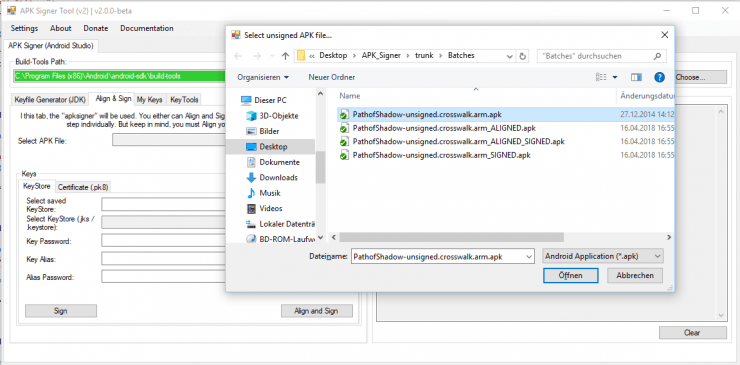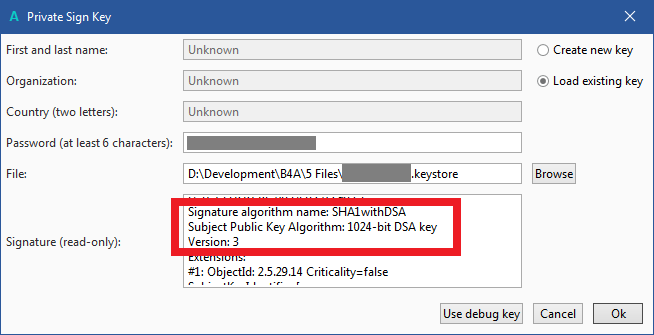A Comprehansive Guide to Sign an Unsigned APK File

How to Sign an Unsigned APK File is the layout used for Android apps. APK stands for Android Package. Every app you put in on an Android cellphone comes on this format. But did you already know some APKs are unsigned?
If an APK is unsigned, you can’t deploy it to your tool. Android will block it for security reasons. That’s why signing an APK is very crucial. In this guide, we will train you a way to sign an unsigned APK document grade by grade.
Let’s begin!
What Is an Unsigned APK?
An unsigned APK is an Android app that doesn’t have a virtual signature. This manner the developer didn’t signal it with a certificate. Android needs this certificates to verify that the app is safe.
Unsigned APKs are common when:
- You construct the app manually.
- You download it from unofficial assets.
- You adjust the app (modifying or repacking it).
- You break up and merge APK parts.
Without a signature, Android devices will no longer will let you install the report. That’s wherein APK signing comes in.
When Should You Sign an APK?
There are many situations where signing is needed:
- After building a custom app.
- After enhancing an present APK.
- Before uploading an app to Google Play.
- When sharing your app with others.
- After disposing of ads or converting resources.
Always remember: If the app is unsigned, it won’t install. Signing it makes it safe and trusted.
Can You Use Test Keys?
Yes, you could use take a look at keys for non-public use. Many signing equipment offer them. But if you want to put up the app or update it later, you ought to use your very own keystore.
Once an app is signed with a key, it must always be updated with the same one. If you lose the important thing, you can’t replace your app anymore.
That’s why it is critical to returned up your keystore report and password.
Why APK Signing Is Important?
APK signing proves that the app is from a relied on supply. It additionally ensures that no person has changed the app since it changed into signed.
Here’s why it matters:
- It protects customers from modified or hacked apps.
- Facilitates Google Play confirm the developer.
- It permits updates to work well.
- It ensures app integrity.
Without a valid signature, Android will give you a warning and stop the install.
Requirements for Signing APKs:
Before we begin signing, allow’s accumulate the tools. You don’t want to be a developer to do that. Just observe the steps.
You will need:
- Unsigned APK record
- Java Development Kit (JDK) hooked up
- Keytool (comes with the JDK)
- Jarsigner (additionally comes with the JDK)
- Zipalign (from Android SDK Build Tools)
Let’s go step by step.
Install Java Development Kit (JDK)
First, you need the JDK. This includes tools like Keytool and Jarsigner.
Here’s how to get it:
- Go to the trusted web site.
- Download and deploy the ultra-modern version.
- Once mounted, open Command Prompt or Terminal.
- Type java -model and press Enter.
If it shows the version, JDK is ready.
Create a Keystore File:
A keystore is a file that holds the key you will use to sign the APK.
Use the following command:
keytool -genkey -v -keystore my-release-key.keystore -alias myalias -keyalg RSA -keysize 2048 -validity 10000
Let’s break it down:
- My-launch-key.Keystore is your key record call.
- Myalias is a name you supply the important thing.
- RSA is the encryption kind.
- 2048 is the key size.
- Ten thousand is the variety of days the secret’s legitimate.
The system will ask for a password and other info. Remember the password. You will need it later.
After this, you’ll have a file called my-release-key.keystore.
Sign the APK Using Jarsigner:
Now it’s time to sign the APK. Use the Jarsigner tool.
Here’s the command:
jarsigner -verbose -sigalg SHA1withRSA -digestalg SHA1 -keystore my-release-key.keystore your_app.apk myalias
Replace your_app.Apk with your APK file’s name. You’ll be asked for the password you put in advance.
Once finished, your APK is now signed. But we are not finished yet. There’s one more step.
Optimize with Zipalign:
Zipalign is used to optimize the APK. This step is optional, but relatively encouraged.
You can discover Zipalign in the Android SDK Build Tools folder.
Here’s how to use it:
zipalign -v 4 your_app.apk signed_app.apk
- Your_app.Apk is the signed APK.
- Signed_app.Apk is the final output.
- Now, signed_app.Apk is ready to put in.
Verify APK Signature:
It’s always good to verify if the signing was successful.
Use this command:
jarsigner -verify -verbose -certs signed_app.apk
If the signature is valid, you will see a message that says “jar verified”.
That means everything worked well.
Using APK Signer GUI (For Beginners)
If you don’t want to use commands, you can use a tool with a graphical interface.
Recommended Tools:
- APK Signer (by Hai Bison)
- APK Easy Tool
- Zipsigner (Android app)
Let’s take a look at one of them.
APK Easy Tool (Windows GUI)
- Download APK Easy Tool from a depended on web site.
- Open the device and cargo your unsigned APK.
- Click on Sign APK.
- The tool will create a signed model for you.
It’s fast, and you don’t need to enter commands.
Zipsigner (Android App)
You can even sign APKs directly from your phone.
Steps:
- Download Zipsigner from a safe APK web site.
- Open the app.
- Choose the unsigned APK.
- Select a key kind (test secret is first-class for fundamental use).
- Tap Sign the document.
Your APK will be signed in seconds.
Note: Zipsigner is not recommended for apps you want to publish to the Play Store.
Signing with Android Studio
If you use Android Studio, signing is easy.
Steps:
- Open your assignment.
- Click Build > Generate Signed Bundle / APK.
- Choose APK.
- Select or create a keystore.
- Fill in your key information.
- Click Finish.
Android Studio will sign and build the APK for you. This method is perfect for developers.

Common Errors and Fixes
“No such file or directory”
- Check if your paths are correct.
- Use quotes around paths with spaces.
“Keystore was tampered with”
- You may have entered the wrong password.
“APK not aligned”
- Run Zipalign to fix this.
“INSTALL_PARSE_FAILED_NO_CERTIFICATES”
- It means the APK is unsigned. Sign it again carefully.
Tips for APK Signing
- Always use strong passwords to your keystore.
- Keep your keystore in a secure place.
- Don’t share your key with anyone.
- Use the same key for all updates.
- Don’t forget to Zipalign your APK.
- Test the signed APK to your tool before publishing.
Is It Legal to Sign Any APK?
It depends.
- If it’s your app, yes, it’s prison.
- If you alter someone else’s app, it could spoil terms of use.
- Never signal pirated or cracked apps.
Use APK signing responsibly.
Recommended: How to Decompile APK Files
Conclusion
Signing an unsigned APK is not as tough because it sounds. With the right gear and clear steps, every person can do it. You can use command-line gear or simple GUI packages. Whether you’re a developer or just curious, mastering how to signal APKs is beneficial.
To recap:
- Get the JDK installed.
- Create a keystore.
- Use Jarsigner to signal.
- Use Zipalign for optimization.
- Verify the signature.
Now your APK is ready to install and share. Always make sure your apps are signed before use. This ensures security, easy set up, and future updates.
Feel free to bookmark this guide for future reference. Happy signing!





